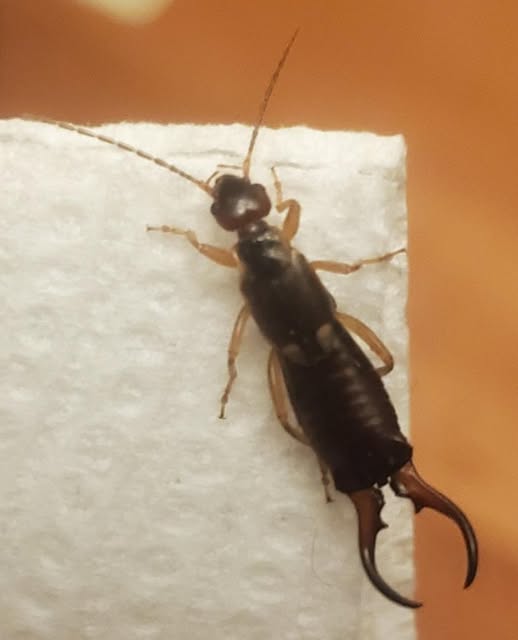Even though earwigs aren’t known to be dangerous or aggressive toward humans, most of us would still prefer not to see them crawling around our homes, patios, or gardens. With their long antennae and intimidating pincers, they’re not exactly welcome guests. This year in particular, many homeowners have noticed what feels like a surge in the earwig population, especially in gardens and outdoor spaces where they love to hide.

I’ve seen more earwigs in my yard recently than ever before, and I know I’m not alone. If you’re spotting these little critters near your home and want a quick, chemical-free way to get rid of them, there’s a simple hack that might just do the trick—using nothing more than olive oil. This effective tip came from Facebook user Alicia Alexander, who shared her method after successfully ridding her backyard of a surprising number of earwigs. According to her post, all she did was pour about half a cup of olive oil into a shallow dish and place it outside on her deck. After less than 24 hours, the bowl had already captured a significant number of earwigs. By the 36-hour mark, the bowl was filled with even more.
It’s surprising just how well it worked. For some unknown reason, earwigs seem to be attracted to the olive oil. They climb into the bowl and, once inside, they can’t get back out. The oil traps them quickly and quietly, offering a natural solution to a frustrating problem. This trick is ideal if you’re looking for an easy way to deal with earwigs without resorting to pesticides or expensive pest control treatments. It’s safe to use around pets and children if you position the bowls carefully, and it doesn’t involve any complicated setup. Just place a few shallow bowls with olive oil around the areas where you’ve seen the most activity—perhaps in your garden beds, near your porch, or around the base of your home’s foundation.
It’s best to check them every day and dispose of the captured insects, then refill the bowls as needed until the problem subsides. While this olive oil method is incredibly effective at catching earwigs, it’s also important to take a closer look at why they might be showing up in large numbers in the first place. One common attractant for earwigs is rotting wood.
Damp, decaying wooden structures around your home—like porch steps, deck boards, garden boxes, or even mulch that holds too much moisture—can serve as a perfect environment for these bugs to breed and hide. If you’re seeing a lot of earwigs, it might be time to inspect these areas. Check for signs of rot, mold, or water damage, and consider replacing or sealing vulnerable wood. Improving drainage, trimming back overgrown plants, and reducing moisture buildup can all go a long way in making your property less appealing to earwigs and other pests. And while earwigs don’t generally infest the inside of your home, they can slip indoors through cracks and gaps in doors or windows, especially if outdoor conditions become too dry or hot. Sealing up potential entry points with weather stripping or caulk can also help keep them outside where they belong. So if you’re tired of seeing earwigs crawling through your garden or making surprise appearances on your patio furniture, give the olive oil method a shot. It’s fast, simple, and surprisingly effective.
And if you really want to tackle the issue at its root, take a look around your yard and make sure you’re not offering up the perfect home for these pests without realizing it. Thanks to Alicia Alexander for sharing such a practical and eco-friendly tip—it’s proof that sometimes, the best solutions come from everyday people just trying to make their outdoor spaces a little more comfortable. Hopefully this method helps restore your peace of mind and lets you enjoy your home and garden earwig-free.





